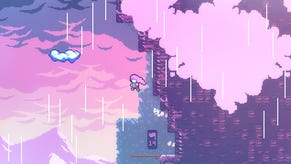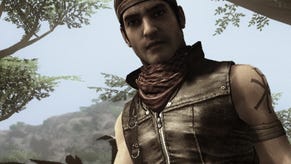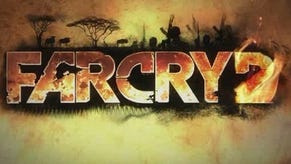Far Cry 2 Triple-Format Face-Off
PC vs. PS3 vs. 360.
One of the most eagerly awaited shooters of the year, Far Cry 2 boasts a cutting edge new game engine which, combined with its very strong 8/10 Eurogamer score, makes it a more than worthy candidate for Eurogamer triple-format bonus round comparison coverage.
For the sake of the one person out there who hasn't read one of these features yet, the aims and methods are fairly straightforward. Xbox 360, PlayStation 3 and PC versions of the game are played simultaneously, hooked up via their digital outputs to a state-of-the-art capture system.
Every single pixel rendered is stored in a completely lossless manner. From there, the games are compared and the differences judged - technical details are revealed and impact on the game experience is also judged.
The HD captures allow us to perform all manner of unholy acts upon the software in question. For a start, you can compare the same scenes across all three formats via the 720p comparison gallery. Simply access the screenshot you want, and then press the 360, PS3 or PC tabs to see the same scene from the selected version of the game. Nice.
More than that, we can crop down the video output, slow it down and encode it into precision h.264 video. Forget the murky scaled-down comparison videos seen almost everywhere else - one pixel in the player is one pixel on your HDTV.
In the case of Far Cry 2, here's a basic introductory comparison video:
(Action from the Xbox 360 and PlayStation 3 versions of Far Cry 2. Want to see more? Check Eurogamer TV for Xbox 360 versus PC, and PS3 up against PC.)
If you're that mad keen on comparison videos, the author's blog has bandwidth-sapping full HD downloads to take a look at, optimised for playback on Xbox 360, PlayStation 3 or dual-core PCs... full resolution, full speed - the complete picture.
First impressions? Ubisoft has done a very good job here. To the casual viewer, there's little to tell the console games apart from the PC version. Our test computer for this feature is our evergreen 'everyman' gamer's PC as used in the Call of Duty: World at War and Fallout 3 face-off features: Q6600 quad-core CPU (GBP 120), 512MB NVIDIA 8800GT (GBP 90) and 2GB of 800MHz DDR2 RAM (GBP 30), powered by the ever-reliable Windows XP Pro. It's a machine significantly more powerful than either console, and while Far Cry 2 runs best on this system, perceptually, the margin of difference isn't as huge as you might think.
Flaming Dunia
Far Cry 2 is the debut offering featuring Ubisoft Montreal's Dunia engine, designed from the ground up for parallel processing on multi-core PCs and current-generation consoles. It's pretty impressive stuff in that virtually everything in the game is dynamically generated on the fly as opposed to being pre-baked: there's destructible and indeed regenerating scenery, along with wind effects that affect foliage and dust movement, and even the spread of fire.
Super-realistic trees (thousands in any given scene, apparently) and underbrush are also taken care of as a matter of course. Dunia's attention to detail even extends to the clouds, which are procedurally generated, forming above as you watch. A real-time day/night cycle is the icing on what is a substantial, technically impressive cake. We'd still give the nod to CryEngine 2 in terms of overall performance, but Dunia is working in the here and now on both PC and console, while Crytek's 360 and PS3 work remains under wraps in Frankfurt.
The fact that Dunia was rolled out simultaneously on three entirely different gaming platforms is impressive in itself, but if you take a look at a video designed to showcase the engine, you'll see that the results of the conversion process are quite uncanny.
(Dunia is at its best on PC, but it seems as though the Xbox 360 and PS3 games have been cut-down to fit in almost identical fashions. The console games are seen here, but check the PC vs 360 and PC vs PS3 edits over on Eurogamer TV.)
The PC game is obviously the master version, possessing the highest-quality lighting options, superior anti-aliasing and tweakables covering many aspects of the environment, such as the vegetation, shading, texture quality and ambient effects. Both Xbox 360 and PS3 versions of the game have all of their variables hard-locked, so it's difficult to tell exactly what has been pared down, but it's fairly obvious that texture quality has taken quite a hit (that said, it's only really noticeable close-up and on ground textures). Water, shadowing and environmental effects have been dialled back significantly, but during the course of the action, such window-dressing is hardly essential to the gameplay.
The overall impression is that the console versions are doing a supremely impressive job of emulating the superior PC visuals. Nothing is missing in terms of actual environmental objects; the African wilderness has been left unmolested in its transition to console. Even on measurable, repeatable instances of pop-in, both PS3 and 360 worked in the same way as the PC code.
However, there are some minor gripes. You can't have failed to notice the poor shadows in the 360 code. Dunia is using the NVIDIA hardware PCF technique (percentage close filtering - Google 'NVIDA PCF' for arguing-the-toss purposes) to merge its shadows with the environment - no problem for PC and PS3, but PCF isn't implemented on the ATI Xenos chip. Rather than try another solution that produces a similar look, Ubisoft simply turned off transparencies on shadow edges. All shadow edges. Instead, there's an interlace/screen-door style effect that looks a lot worse than the PS3 or PC versions and is by far the biggest blemish on the Xbox 360 game's copybook.
PS3 for its part invokes quincunx anti-aliasing to smooth off its jaggies. In that respect it works well, but as is usually the case with this technique, the entire screen is blurred a touch as a direct result. The overall effect isn't so bad in this case, but the 360 game, with its more usual multi-sampling anti-aliasing has both the required smoothed-off edges and the retention of fine detail.









